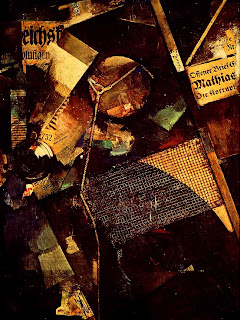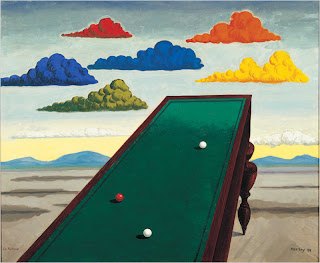The Exhibition
The title of the exhibit is
In Country: Soldier’ Stories from Iraq and Afghanistan by
Jennifer Karady.
The theme is the challenges that soldiers have to deal with when returning to civilian life and adjustments they have to make to survive in society. The exhibit is used to reach the community and veterans, it is designed to hang as fine art or it could be published as a book.
 |
| Market Arcade (Main Street facade) |
 |
| Market Arcade interior |
The Gallery
I went to
Cepa Gallery that is in the Market Arcade in Downtown Buffalo.
Cepa Gallery has exhibits on all three floors and also in the basement of the building. The exhibit I went to see was on the 2
nd and 3
rd floor. Since it was on two floors it was not the ideal way to display them but that is the way their space is. There are other businesses in the building so it seem they took what space was open. The 3
rd floor was only their gallery and I think they should take over the whole third floor to have cohesiveness. The building has a skylight that runs the concourse of the building, which brings in a lot of natural light. The 2
nd floor gallery has walls that filter out the natural light where the windows are. The walls could be used to hang artwork, too. Small LED lights that were attached to a track lit the photographs. In the 3
rd floor gallery they didn’t have them walls so there were bad reflections in the glass of the frame. The walls and ceiling were all white with traditional style gray trim around doorways and baseboards and crown moulding. The ductwork for the heating and cooling was visible which is very industrial but painted it white to camouflage it. The floors were original wood and they creaked but I like the combination of old and new. The galleries were long hallways but they had small divisions where doorways were. It created a very intimate space for the artwork that hung in the different divisions.
The Artwork
The divisions that were created by the doorways the artwork was organized by one photograph in first, then two photographs, and one photograph again, and so on. There were a total of 14 photographs and I read her goal is to do 25 in total. The 3rd floor gallery was set up in the same way. When two photographs were presented in one space there was approximately 5 feet separating them. They are all colored photographs that measure 5 ft x 5 ft. All of them have a soldier’s story that is labeled on the side on a separate board, which is 11 in x 14 in. Each work has a 1 in white frame around it that blends in with the walls. The photographs have an image of the actual veteran within the scene. Each artwork is different because the composition of it coincides with the story being told.
Criticism of 3 Artworks
All the photographs are representational of the story that is told but has this surrealistic sensation. Karady wanted the viewer to experience how the soldier is feeling by imagery. She also wants the viewer to see how the soldier is adapting to everyday life, which usually incorporates their family and friends.
 Former Sergeant Jose Adames, US Marine Corps Recon, Stinger Gunner, 1st Platoon, Alpha Company, veteran of Operation Iraqi Freedom, Brooklyn, NY, February 2009
Former Sergeant Jose Adames, US Marine Corps Recon, Stinger Gunner, 1st Platoon, Alpha Company, veteran of Operation Iraqi Freedom, Brooklyn, NY, February 200948”x 48” Chromogenic Color Print
The photograph is of a city block on garbage day. The garbage truck is on its way but there is a pothole that it will probably hit. The pothole seems larger than the norm. The Marine veteran is crouched down on the sidewalk with his ears covered with his hands. Karady uses a variety of components to keep your eye moving. There is linear perspective used as the building, street, and sidewalk are all going to a vanishing point to the left of the composition. Your eyes follow the street and create movement of the garbage truck that is coming towards us. The pothole has smoke billowing out of it because it stands for the mortar explosion in a small scale.
Former Senior Airman John Tingley, US Air Force, Airborne Radar Technician/Firefighter for AWACS, veteran of Operation Enduring Freedom and Operation Iraqi Freedom, with Manuel and Sid, Highways Theatre, Santa Monica, CA, May 2008
48”x 48” Chromogenic Color Print
The photograph is a scene inside a bedroom. There are two men sitting on the floor playing video games but the TV has a radar screen on it. There is a small plane model on top of the TV. There is a dog next to the men but his attention in to the Air Force veteran. The Air Force veteran is floating above his bed looking down at the men. He seems to be isolated from the rest of the scene. The nightstand holds many prescription bottles. Karady creates this bedroom scene, which keeps our eyes moving to see everything within it. She uses light that comes in from the lower left corner to make our eye move to the top, right corner. The weightlessness of the veteran represents how he felt inside the jet, which he never was strapped in. He was the radar technician in the jet so that is why the TV screen has radar on it.


Former Staff Sgt. Andrew Davis, 75th Ranger Regiment, U.S. Army, veteran of Operation Iraqi Freedom and Operation Enduring Freedom, with wife Jodie, and Iraq war veterans and friends Tom and Andy, Saratoga Springs, NY, October 2009
48”x 48” Chromogenic Color Print
The photograph is set in a rural area along a creek. The Army veteran is sitting on a rock with two of his buddies with blood all over their uniforms. The one man is washing the blood out. The Army veteran has an eyeball in his right hand and his buddies have eyeglasses on that have eyes on slinkies, which only the right eye is springing up and down. Also, there are eyeballs in the grass by the men. The Army veteran’s wife is pitching a tent in the background and looking towards him with hope. Karady uses the road to make our eyes follow the path, which makes your eyes go to the wife. The wife uses her gaze to help our eyes go to the men. She uses the creek to represent the story but also it could represent the men reflecting on their story. The artwork uses the trees in the upper part to balance the men in the lower part of the photograph.
I didn’t take my camera because I thought it would be redundant to take a photograph of a photograph. I’ve been to
Cepa Gallery before and have taken classes there, too. I didn’t mind looking at the physical space of the gallery. I enjoy architecture of Buffalo, so I got to analyze the space within. I studied the space first and answered the questions that referred to it then I looked at the exhibit so I could enjoy it.


















































